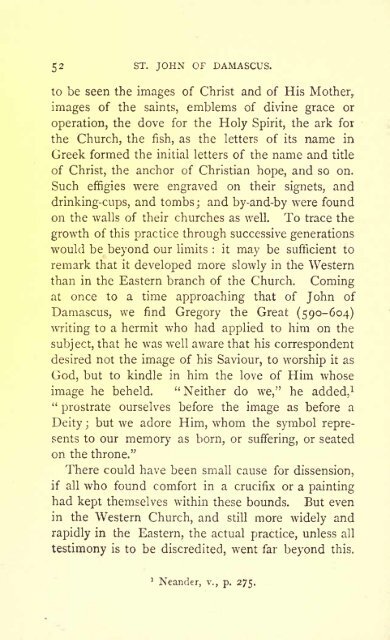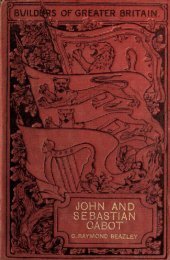st. john of damascus (676-749 - Cristo Raul
st. john of damascus (676-749 - Cristo Raul
st. john of damascus (676-749 - Cristo Raul
You also want an ePaper? Increase the reach of your titles
YUMPU automatically turns print PDFs into web optimized ePapers that Google loves.
"<br />
52 ST. JOHN OF DAMASCUS.<br />
to be seen the images <strong>of</strong> Chri<strong>st</strong> and <strong>of</strong> His Mother,<br />
images <strong>of</strong> the saints, emblems <strong>of</strong> divine grace or<br />
operation, the dove for the Holy Spirit, the ark for<br />
the Church, the fish, as the letters <strong>of</strong> its name in<br />
Greek formed the initial letters <strong>of</strong> the name and title<br />
<strong>of</strong> Chri<strong>st</strong>, the anchor <strong>of</strong> Chri<strong>st</strong>ian hope, and so on.<br />
Such effigies were engraved on their signets, and<br />
drinking-cups, and tombs; and by-and-by were found<br />
on the walls <strong>of</strong> their churches as well. To trace the<br />
growth <strong>of</strong> this practice through successive generations<br />
would be beyond our limits it may be sufficient to<br />
:<br />
remark that it<br />
developed more slowly in the We<strong>st</strong>ern<br />
than in the Ea<strong>st</strong>ern branch <strong>of</strong> the Church. Coming<br />
at once to a time approaching that <strong>of</strong> John <strong>of</strong><br />
Damascus, we find Gregory the Great (590-604)<br />
writing to a hermit who had applied to him on the<br />
subject, that he was well aware that his correspondent<br />
desired not the image <strong>of</strong> his Saviour, to worship it as<br />
God, but to kindle in him the love <strong>of</strong> Him whose<br />
image he beheld. "Neither do we,"<br />
he added,<br />
1<br />
pro<strong>st</strong>rate ourselves before the image<br />
as before a<br />
Deity ;<br />
but we adore Him, whom the symbol repre<br />
sents to our memory as born, or suffering, or seated<br />
on the throne."<br />
There could have been small cause for dissension,<br />
if all who found comfort in a crucifix or a painting<br />
had kept themselves within these bounds. But even<br />
in the We<strong>st</strong>ern Church, and <strong>st</strong>ill more widely and<br />
rapidly in the Ea<strong>st</strong>ern, the actual practice, unless all<br />
te<strong>st</strong>imony is to be discredited, went far beyond this.<br />
1<br />
Neander, v., p. 275.
















